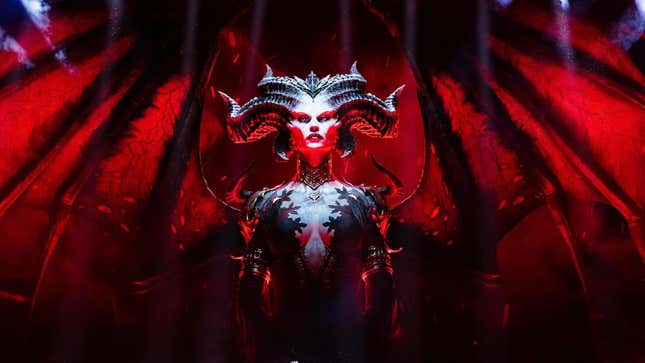
If it’s anything like previous games in the series, Diablo IV will only take a couple dozen hours to finish the main story. But for many players, that’s when the game really gets started, letting you fine-tune your character’s build and take on ever more difficult dungeons in pursuit of better and better loot. Diablo IV’s developers seem to want to make sure you can continue to progress no matter how you like playing the game.
A new trailer includes brief interviews with game director Joe Shely, associate director Joseph Piepiora, lead producer Kayleigh Calder, and game producer Ash Sweetring as they give players a broad overview of what to expect from Diablo IV’s endgame. The general theme is that whether you like dungeons, fighting other players, or just running around the map, there are ways for you to continue making your character stronger even after hitting the level cap. While the action-RPG’s recent beta weekends gave players a sense of the early game, this latest video previews how they’ll be spending their time over the next hundred hours and all the ones that follow.
The endgame will begin with a Capstone dungeon. Completing that will give players access to World Tiers from Adventurer to Veteran to Nightmare and finally Torment, which progressively make the game harder and improve the types of loot that drop. Diablo IV has over 120 dungeons, and the option to keep resetting them. New World Tiers are the most straightforward way to continue getting new rewards for playing through them over and over again.
When it comes to customization, the endgame opens up an entire new skill tree system called the Paragon Board. At first glance it looks like a gothic version of a match-three puzzle game, but the idea is players can continue augmenting their character’s strengths and weaknesses even after their base skill tree points have all been allocated. The board can even be rotated to unlock nodes in different orders.
Nightmare Dungeons are the core of Diablo IV’s endgame
The Codex of Power will be another type of endgame customization that revolves around gear, allowing you to collect weapon- and armor-augmenting Aspects by completing dungeons. This is where Nightmare Dungeons come in, special versions of dungeons that you can alter using found sigils to change how they are played. Affixes, meanwhile, add additional challenges like hell gates that can open up anywhere during a run and unleash random monsters from other parts of the world.
This type of dungeon grind seems like it will still be the main focus of Diablo IV’s endgame, but the developers pointed to other activities that will open up as well. Helltide areas will occasionally take over certain parts of the map, filling them with more blood and demonic forces than usual. The tougher enemies there will drop special shards players can use to unlock unique treasure caches that will spawn in Helltide areas.
Read More: Diablo IV’s Beta Has Us Kinda Obsessed With Hell
The Tree of Whispers, meanwhile, is a gruesome frenemy who will give you bounties that require completing challenges from around the map. The devs gave saving a village from roaming wolves as an example. Nothing too wild, but another reason to keep running around the overworld map. Those bounties can then be exchanged for powerful items, potentially giving players who don’t want to necessarily grind Nightmare Dungeons another avenue to getting stronger.
Finally, the Fields of Hatred will be player-vs-player zones. If you want to stomp some strangers online you can head to one of those. The main objective is to collect shards from fallen enemies and purify them to trade for better rewards back in town. But players can also kill one another in the Fields of Hatred and steal one another’s shards. It sounds a bit like the Dark Zones from The Division 2, or the extraction modes found in most online shooters these days. I’m intrigued by the opportunity to win more than just bragging rights.
As with any live-service loot game, however, the proof will be in granular details of how all of these modes, activities, and progression paths fit together. Even the best-laid plans can be stymied by bad drop rates or difficulty levels that aren’t appropriately tuned. Those things won’t be locked in when Diablo IV arrives on June 6, though. The developers are promising lots of post-launch content, and Diablo III’s seasonal updates are still going on too. We’ll see if Diablo IV manages to live on in the same way.